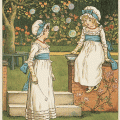There is no formula for sharing your voice
Sometimes artists are able to perfectly capture a time and place. Romare Bearden is one of those gifted visionaries.
Born in 1911 in the Jim Crow South, Romare Bearden (1911 – 1988) ended up an internationally celebrated artist and unrivaled visual chronicler of the Harlem Renaissance. His gifts as an artist and storyteller were completely unique. But more than that, he owned the look and feel of Harlem at its zenith. And he did it his own way—in a unique medium.
He embraced collage in a way that perfectly captured the times. And those times were captivating. They embodied a flowering of African American culture in music, in dance, in theater, in literature and in art.
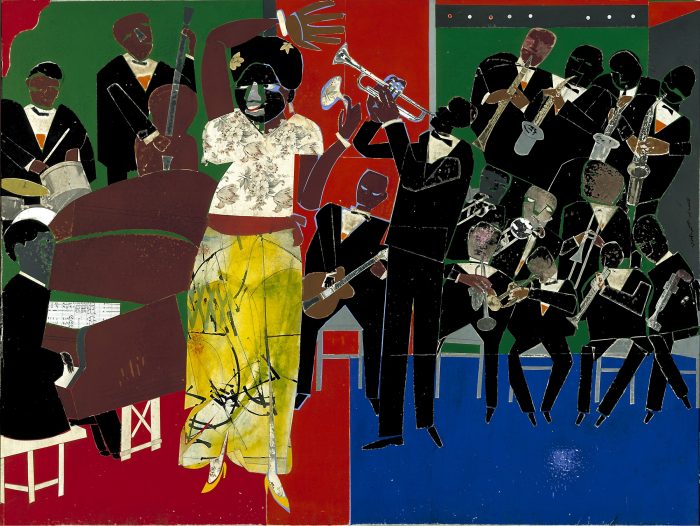
Romare Bearden, Empress of the Blues, 1974, acrylic and pencil on paper and printed paper on paperboard, 36 x 48 in. (91.4 x 121.9 cm.), Smithsonian American Art Museum, Museum purchase in part through the Luisita L. and Franz H. Denghausen Endowment, 1996.71
Bearden’s personal story certainly put him in the right place at the right time. He moved with his parents from North Carolina to New York City around 1914. He graduated with a degree in education from New York University and got a job with the New York City Department of Social Services as a full-time social worker, all while working at his art.
His work is so of the times that you can imagine sound pulsing from his images: The jazz and blues from Harlem greats such as his friend Duke Ellington, the joyous energy of the Apollo Theater; the raucous shouts of kids playing on the street all resonate in his work.
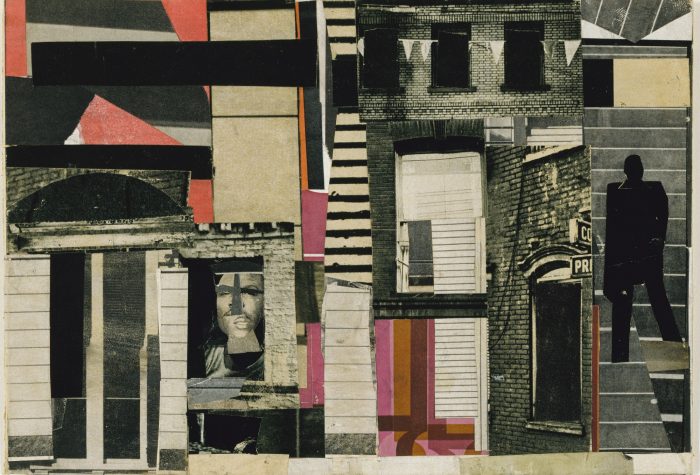
Romare Bearden, Spring Way, 1964, collage on paperboard, sheet and image: 6 5⁄8 x 9 3⁄8 in. (16.8 x 23.8 cm.), Smithsonian American Art Museum, Bequest of Henry Ward Ranger through the National Academy of Design, 1999.9
Bearden’s unique artistic gifts drew 11 students to the Ripley Center for a Smithsonian Associates class called “Mixed Media in the Style of Romare Bearden.” For five hours on three Sundays in February, the class felt Romy’s magic in the room with them—all due to the inspiration of instructor Sandra Gobar.
Gobar has been teaching Associates Studio Arts classes for more than 20 years. She is a working artist who studied with Wolf Kahn and was a former adjunct professor at the Corcoran College of Art and Design. It is because of Gobar’s passion that “Mixed Media in the Style of Romare Bearden” is much more than an art class. Gobar has an uncanny ability to channel an artist and show students how they think and create. Everyone who has ever taken a class from Gobar can tell you how she brings an artist to life.
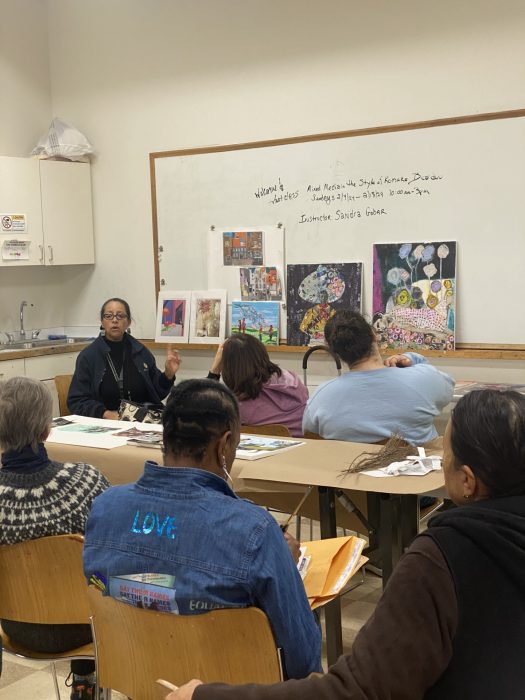
Students explore Bearden’s work and their own creativity in Sandra Gobar’s Studio Arts class, presented by Smithsonian Associates. Photo courtesy of Janet Hewitt.
She leads students through an introductory discussion that feels a lot like a condensed doctoral program in art history on the chosen artist. She then periodically throws out insights on color theory and composition. She will consult the color wheel she always wears around her neck, and offer insights on the featured artist’s personal story.
For this class, she filled the room with books about Bearden and posters of his work, and she showed a film about the artist. Students got a 360- degree view of Bearden, his times and his technique.
She also offers a bit of free counseling on positive self-image, with a touch of strict parental discipline tossed in. Don’t ever tell her, “I’m not really an artist” or “I can’t really draw.” She won’t have it.
The students in her Sunday Bearden classes may have been a little more open to trying their hand at collage, because it’s an accessible medium for people who don’t necessarily think of themselves as artists. Collage is a medium built for individuality. How you put your material down on paper “is your voice,” Gobar says. “There is no formula for doing that.”
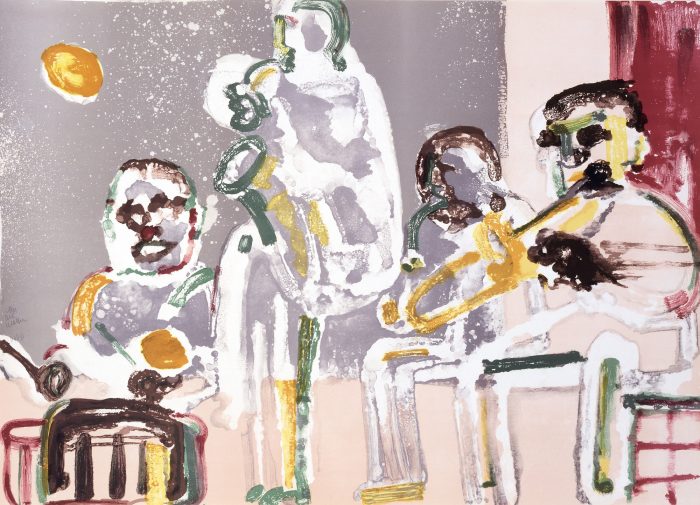
Romare Bearden, Tenor Sermon, from the Jazz Series, 1979, color lithograph on paper, sheet and image: 24 3⁄4 x 34 3⁄4 in. (62.8 x 88.3 cm), Smithsonian American Art Museum, Gift of Eugene I. Schuster, 1993.79.4, © 1979, Estate of Romare Bearden
Gobar doesn’t teach you how to create “in the style of” in her classes. It’s more like a full immersion into the artist’s headspace. It’s not that students copy a particular artist’s style, it’s more that they are able to internalize the artist’s creative approach. For the students in this class, it almost felt like being in a Romare Bearden trance that allowed them to work some magic of their own.
And as the volunteer watching this magic happen, I found myself inspired by Bearden as well—his powerful style captures not only the vibrant street rhythms of Harlem but also the exhausted stifling air of the Old South.
So, it was no surprise that by the end of the third class the vote was unanimous. Three classes on Romy were not enough. They all wanted more. More Romy, more Gobar, more time together. (There was no group hug, but there was a class photo at the end.)
But without question, it was Gobar that made something special happen.
Interested in joining Smithsonian Associates for a Studio Arts class? Learn more about upcoming classes here!
Janet Hewitt is a volunteer for the Smithsonian Associates Studio Arts program.
Posted: 28 March 2024
- Categories:



